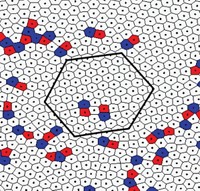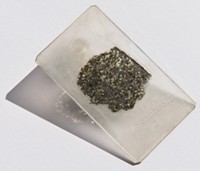Advertisement
Grab your lab coat. Let's get started
Welcome!
Welcome!
Create an account below to get 6 C&EN articles per month, receive newsletters and more - all free.
It seems this is your first time logging in online. Please enter the following information to continue.
As an ACS member you automatically get access to this site. All we need is few more details to create your reading experience.
Not you? Sign in with a different account.
Not you? Sign in with a different account.
ERROR 1
ERROR 1
ERROR 2
ERROR 2
ERROR 2
ERROR 2
ERROR 2
Password and Confirm password must match.
If you have an ACS member number, please enter it here so we can link this account to your membership. (optional)
ERROR 2
ACS values your privacy. By submitting your information, you are gaining access to C&EN and subscribing to our weekly newsletter. We use the information you provide to make your reading experience better, and we will never sell your data to third party members.
Nanomaterials
Charged microdroplets turn minerals into nanoparticles
Researchers show stable minerals easily breakdown in charged microdroplets
by Fionna Samuels
June 20, 2024
| A version of this story appeared in
Volume 102, Issue 19

Microdroplets of water are capable of incredible chemistry; the tiny pools have vastly different properties different from those of bulk water. Now, researchers led by Thalappil Pradeep of the Indian Institute of Technology Madras have observed minerals spontaneously breaking down into nanoparticles when suspended in charged microdroplets (Science 2024, DOI: 10.1126/science.adl3364).
Silicon dioxide, or quartz, was chosen as the first mineral to investigate because of its high natural abundance, Pradeep says. For the experiment, graduate student B. K. Spoorthi ground a sample of river sand into a powder with grains fine enough to be suspended in microdroplets. The team loaded water and the sand into a home-built electrospray setup, which delivered charged microdroplets onto a piece of aluminum a few centimeters away.
Later, transmission electron microscopy revealed the metal was peppered with round silica nanoparticles: the bonds in the quartz had broken down in mere milliseconds. It’s such a violent process that Pradeep thinks of the charged microdroplets as “wet fire.”
“To see what they saw is astounding,” says Michael Hochella, a geoscientist at Pacific Northwest National Laboratory who has studied the role of nanoparticles in nature for nearly 30 years. Despite both quartz and ruby taking millions of years to naturally dissolve, “here they are, breaking down dramatically and easily in very short amounts of time,” Hochella says.
More research will reveal whether similar processes happen in naturally occurring microdroplets—a theory posited by the authors—but Hochella thinks “there’s no question that they have hit on something that is going to be studied for a long time.”




Join the conversation
Contact the reporter
Submit a Letter to the Editor for publication
Engage with us on Twitter